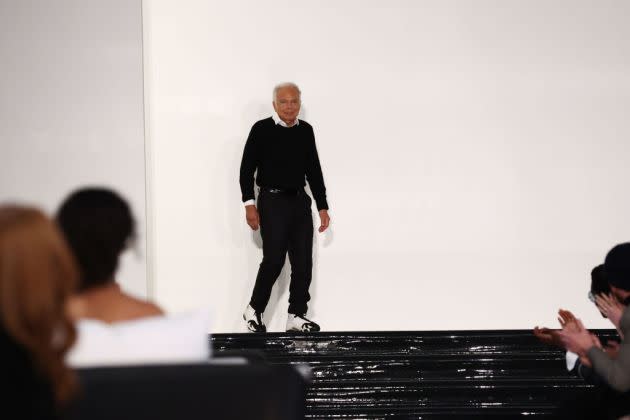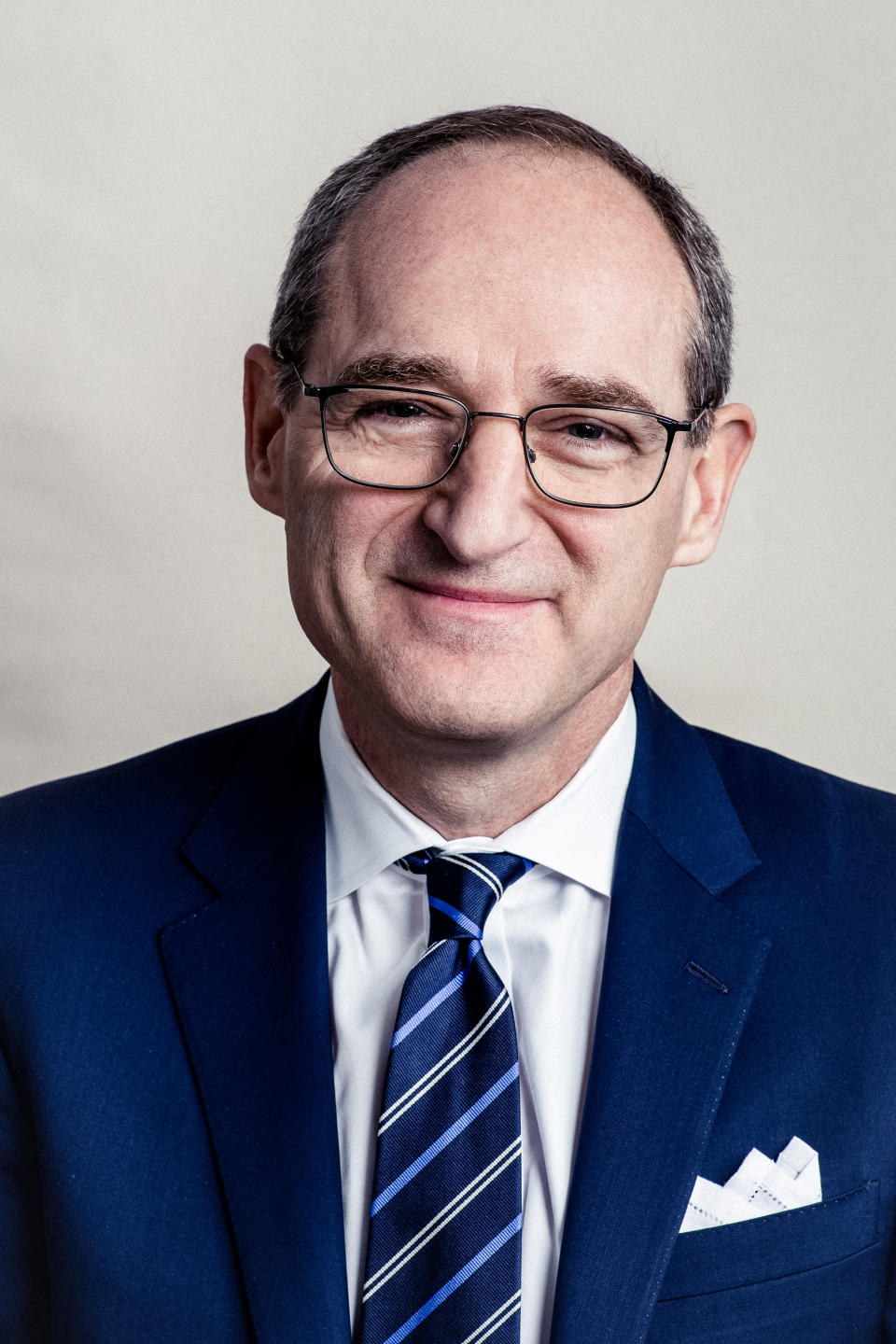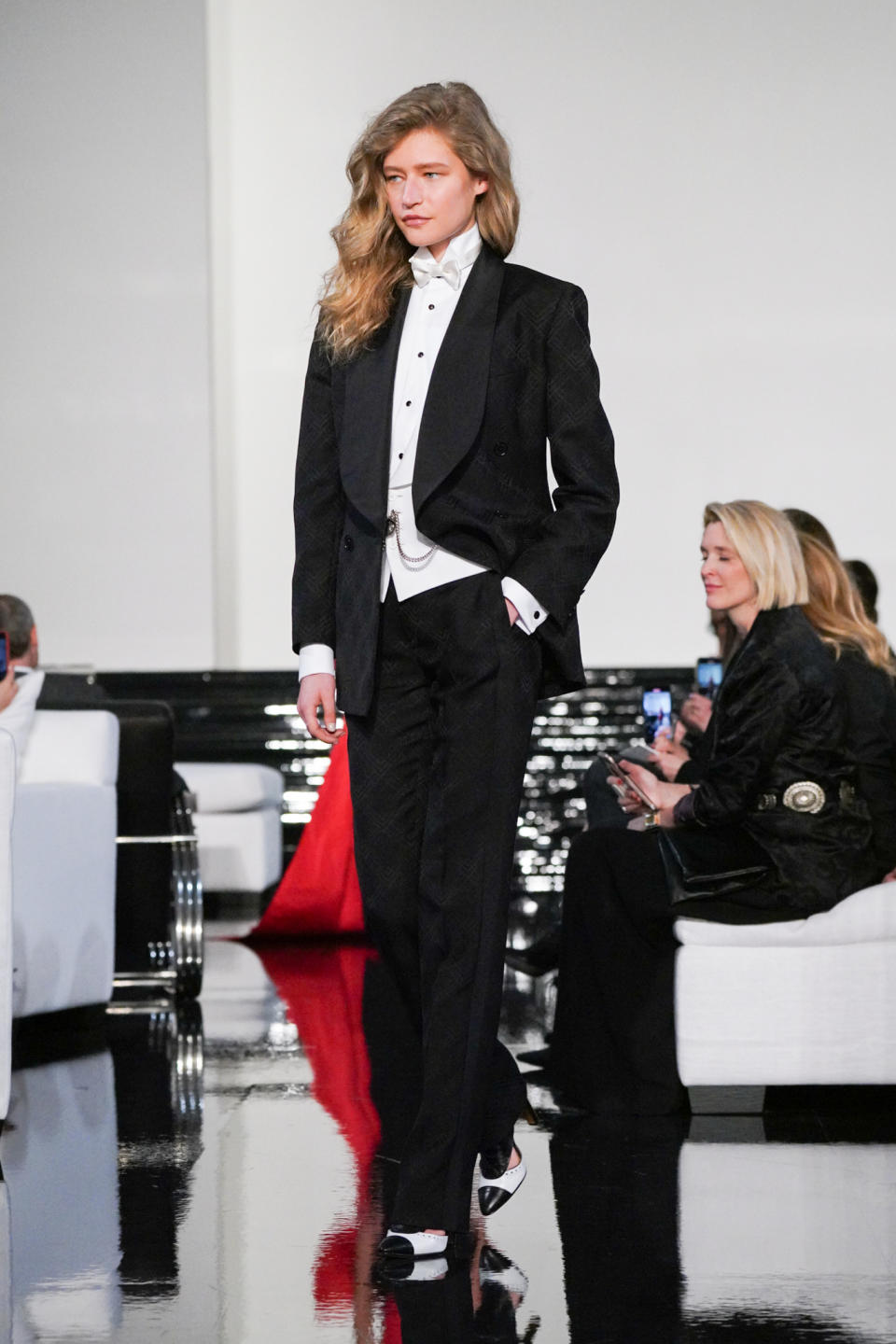Ralph Lauren Accelerates, Sets Strategic Plan to Build on ‘Fortress Foundation’

When Ralph Lauren rang the opening bell at the New York Stock Exchange on Monday, he was celebrating 25 years as a public company — and also ringing in the firm’s next phase.
Lauren, who leads Ralph Lauren Corp. as executive chairman and chief creative officer, followed up the stock market milestone with an investor day that highlighted the company’s new strategic plan, complete with financial targets for the next three years.
More from WWD
But clearly, the founder was also taking stock of the empire he started 55 years ago.
“I am the largest shareholder and I’m very proud of it — and I’m very proud of it because the team here is amazing,” Lauren told investors, speaking off the cuff. (Lauren owns 100 percent of the company’s Class B shares and about 350,000 of its Class A shares, giving him control over 84.9 percent of companies’ voting rights).
“Names don’t matter, it doesn’t matter who cooked up the stew,” said Lauren, one of the most famous names in fashion. “If you don’t have a great team, you’re never going to have a great company. I’m proud of the team we have here and you all look so cool.”
Lauren said the professionalism of the company’s executive team was “infectious” and specifically thanked chief executive officer Patrice Louvet.
“You’ve done an amazing job and you’ve put this company in the right place,” he said.
Lauren also took a dig at his former boss from way back when, who didn’t want to get into the tie business with the young designer.
“He said, ‘The world is not ready for Ralph Lauren,” Lauren recalled. “I feel sorry for the company I left, because I turned out to be pretty great.”
Joking aside, Lauren said: “I don’t get paid for this, but I must say that I hope you understand what it is to feel what I feel. When you get up to go to work in the morning and you’re happy. This company has a heart, it has soul, it has power. I thank you very much for being here. I love you. I love that you’re here.”
And that is a healthy dose of the Ralph Lauren dream — optimistic and classic with a feeling of family.
Wall Street seemed to buy into the dream to an extent, driving up the company’s shares by 3 percent to $96.27 on Monday, giving it a market capitalization of $6.5 billion. Still, shares of Ralph Lauren — like much of retail and fashion — have fallen sharply this year, down 29.2 percent from their 52-week high.
Louvet’s job in the years ahead is to make sure that Ralph’s dream not only reaches more people, but that the brand becomes an important part of their lives.
During the investor meeting, Louvet laid out the company’s new strategic plan — dubbed “Next Great Chapter: Accelerate” — which builds on and extends on the strategy he laid out in 2018.
The CEO started the meeting with a personal acknowledgement of the founder.
“Ralph, you provide us with a clear ambition, set of values and purpose that guides everything we do to inspire the dream of a better life through authenticity and timeless style,” Louvet said. “That grounds us, always has and always must.”
He described Lauren as “so much more than a fashion designer” and “is actually closer to a movie director.”
“Ralph creates worlds and then invites people into these worlds,” he said, describing it as an approach to luxury that is not about wealth or status, but love and family connection.”
And that, he said, is a powerful business proposition.
In an interview with WWD before the meeting, Louvet was also in a mood to both take stock of how the company built what he described as a “fortress foundation” and how it speeds on to its new goal, coming on top of $6.2 billion in revenues logged last year.
Over the next three years Ralph Lauren is planning revenue to show a compounded annual growth rate in the mid- to high-single digits with operating profit growth exceeding the top-line expansion in constant currency by 2025. Ralph Lauren also plans to send $2 billion back to investors in the form of dividends and share repurchases.
“Our overall ambition is to be the leading luxury lifestyle company in the world,” Louvet said. “When we look at the data, it’s very clear that our brand is bigger than our business by far — we have significant runway for our business to catch up with the size of the brand.”
While that message is clear, it’s coming to the market at a time of incredible turmoil.
Ultra-high inflation, war in Ukraine, the threat of a recession, general consumer wariness, supply chain backups and whatever the next shock to the system might be all have the potential to swamp the message of any company on a given day — as Louvet is very well aware.
But the CEO is laying out a vision for the future of the brand that looks beyond the current turmoil and is based on four years of work to build up the company.
Louvet pointed to progress from the last strategic plan:
A brand that’s been strengthened with more younger consumers buying in, and paying more, with average unit retail prices up 64 percent over the past four years. The price increases have been driven by more expensive product such as outerwear, fewer promotions, faster growth in China and higher prices on like-for-like items.
An emphasis on building the core of the brand to 70 percent of the offering, highlighting looks like the cable knit sweater, the double-breasted blazer and the polo shirt while growing in outerwear, wear to work looks and so on.
Transforming the company’s go-to market strategy, driving 64 percent of sales from the direct-to-consumer business and growing digital to 26 percent of the overall business.
Louvet sees the last strategic plan as a case of “promises made, promises kept” and now he’s playing on that to get investors to follow along with him on this next phase.

The new strategic plan rhymes with the last one, coming in three parts and hitting on the same broad areas, but with the emphasis placed on the elements now needed to drive the business forward.
The push to elevate the Ralph Lauren brand and bring in fresh faces continues, but now the company is zeroing in on retention to boost consumer lifetime value.
So, nudging the customer who comes into the Ralph Lauren family by purchasing, say, a polo, to go deeper and buy a sweater, a suit or more.
Louvet said the brand’s product depth “uniquely positions us” to keep customers shopping once they connect with the brand.
Ralph Lauren, which employs 250 data scientists, has also been sharpening its data and analytical skills to help it not just know who bought that polo, but what their next step in the brand might be and how to lay that path out with a little marketing.
The company’s effort to build the core has transformed into a plan to drive that business forward and “expand for more.”
That means doubling down on women’s, continuing to build outerwear and going big in home.
Louvet said that while 56 percent of the brand’s shoppers are women, only 30 percent of the business comes from women’s products.

“They buy for their husbands, their boyfriend, their children or gifting and not as much for themselves,” said the CEO, who’s looking to develop women’s to be 50 percent of the business.
Home is also getting a spotlight, where Louvet said there is an opportunity to sell more couches and other furnishings.
“Right now the headlines are about people pulling back to some extent in home investment, but our lens is absolutely beyond the next few months,” he said. “When I think of Ralph Lauren, I think of him as so much more than a fashion designer. He creates worlds.”
Louvet described the home category as having “very long-term potential.”
And, finally, where Ralph Lauren was reworking its go-to market strategy, it is now looking to use the breadth of its distribution and touch points — from stores to coffee shops — to win in its 30 top cities around the world, 14 of which are in the U.S.
“Our ability to create these ecosystems where we have different Ralph Lauren store formats coupled with quality wholesale combined with surround sound digital is the most effective way to engage with our customers,” Louvet said.
The CEO described the overall strategy as “enabled” by five key attributes of Ralph Lauren, including its people and culture; its data analytics capabilities; operational savvy; a strong balance sheet, and its standing in the area of citizenship and sustainability.
At the meeting, Louvet also stressed the importance of having the right people and culture to put the strategy into action.
“Culture eats strategy for breakfast, lunch and dinner and our company’s culture is a competitive advantage,” he said.
The CEO is looking to press that competitive advantage.
“We’re not just planning for the next three years, we’re planning for the next decade and beyond,” he said, inviting investors to dream a little bit about the future.
“Imagine if every consumer who purchases one of our iconic polo shirts — and we sell over 10 million every year — also bought a pair of our denim, a pair of Polo sneakers or one of the new Polo ID bags,” he said. “Imagine we were able to replicate our success in men’s in the women’s segment. There’s an amazing runway of possibility for this company. It is the strength of our assets and our fortress foundation that gives us the confidence to continue to dream, to imagine.”
Ralph Lauren, after all, started with a dream.
